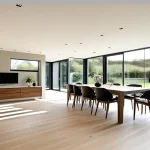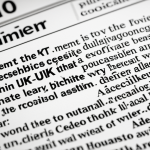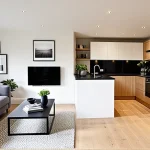Importance of a Cozy Pet-Friendly Space
Creating a comfortable environment for pets is more than just a luxury; it’s essential for their well-being. Pets, much like humans, thrive in spaces that cater to their comfort and safety. A pet-friendly home significantly influences a pet’s behavior, promoting a calm and harmonious living atmosphere.
Pets perceive their surroundings keenly, and a safe environment reduces stress and anxiety, leading to improved behavior. When pets feel secure and relaxed, they are less likely to exhibit destructive behaviors, ensuring a peaceful coexistence with their human companions.
Have you seen this : How Can You Ensure a Smooth Transition for Your New Pet in the UK?
Furthermore, a well-designed space enhances human-animal bonding. Thoughtful design elements, such as cozy nooks and designated play areas, create opportunities for interaction and shared enjoyment, strengthening the bond between pets and their owners. By prioritizing pet comfort and incorporating their needs into home design, you foster a nurturing environment where both you and your furry friends can thrive.
Choosing Pet-Safe Materials
When it comes to constructing a safe and cozy pet-friendly space, selecting the right non-toxic materials is crucial. This ensures that your furry friends are not exposed to harmful substances while they roam freely in their home.
Also to discover : How Can You Train Your Pet to Adapt to Life in the UK?
Overview of Non-Toxic Fabrics
Non-toxic, pet-friendly fabrics are ideal for upholstery, as they are free from harmful chemicals and durable enough to withstand everyday wear and tear from your pets. Consider opting for natural materials like cotton or linen, which are both breathable and easy to clean. These choices keep your pets comfortable while giving you peace of mind.
Floor Materials for Pet Safety
Flooring is another important aspect of pet safety. Materials that provide traction can prevent slipping, minimizing injuries. Options such as cork, bamboo, and certain vinyl formulations offer a great balance of comfort, safety, and ease of maintenance, making them pet-friendly choices.
Wall Finishes to Consider
Finally, consider the wall finishes in your home. Low-VOC paints and wallpapers are essential to maintain a pet-safe environment. They help reduce indoor pollution and decrease the risk of allergies in pets. Choose finishes that are easy to clean, ensuring your walls stay pristine even in a bustling household.
Arranging Your Space for Pet Comfort
Designing a space that caters to pet comfort while maintaining a stylish environment is essential for households with pets. By thoughtfully considering the layout and furniture arrangement, homeowners can create a functional design that harmonizes with both pets’ needs and aesthetic preferences.
Creating Open Spaces for Movement
Pets need ample space to move around freely. Ensuring open spaces for movement helps prevent injuries and supports their natural playfulness. Consider arranging furniture to allow clear pathways and easy access to various areas of the home. This consideration is crucial in designing a safe environment where pets can navigate comfortably and without restrictions.
Designating Pet Areas
Setting up specific zones for pets’ activities—such as eating, sleeping, and playing—enhances the living experience for both pets and humans. Designating pet areas not only organizes the home but also helps in managing pet behavior. These zones become dedicated spots where pets can relax and enjoy their time, reducing stress associated with unclear boundaries.
Furniture That Works for Pets
Selecting furniture that fits well with pets involves prioritizing durability and pet comfort. Look for materials that withstand wear and tear from claws and paws, while also being comfortable for resting or lounging. Many pet-friendly furniture options blend seamlessly with existing decor, ensuring the home remains stylish yet accommodating.
Designing Cozy Corners for Pets
Creating cozy pet spaces is vital for your pet’s comfort and well-being. Not only do these dedicated areas enhance your pet’s sense of security, but they also contribute to a harmonious home environment. Designing purposeful corners within your house ensures that your furry friends have spots to unwind, relax, and enjoy their day.
Optimal Locations for Pet Beds
Selecting the right places for pet beds is crucial to ensure your pets feel both safe and comfortable during their rest. Ideal spots include quiet, low-traffic areas, providing a peaceful retreat away from household commotion. Considering the preferences of your pet’s natural behavior, such as their love for warmth or desire for a vantage point, can guide you in choosing the best location.
Building Snug Hideaways
Pets often appreciate having snug hideaways where they can retreat and feel secure. These can be crafted easily using soft materials and toys, transforming unused nooks into private havens. Emphasizing DIY ideas, you can customize these spaces with simple materials like cardboard or spare fabric, ensuring that these hideaways are both budget-friendly and cozy.
The Role of Pillows and Blankets
Enhance your pet’s comfort with soft pillows and warm blankets, which not only keep them cozy but also add a personal touch to their spaces. Offering warmth and a sense of familiarity, these items can be easily integrated into pet beds or used to line hideaways. When selecting these accessories, prioritize pet-friendly, machine-washable materials that ensure both style and practicality.
Incorporating Functional Decor
Creating a pet-friendly home doesn’t mean sacrificing style. Embracing functional decor can transform your living space into an organized and aesthetically pleasing environment that accommodates both your needs and those of your furry companions.
Stylish Storage for Pet Supplies
Maintaining an orderly home with pets involves creative storage solutions. Opt for furniture with built-in storage, such as benches with compartments or coffee tables with hidden drawers, to efficiently store pet supplies like toys, leashes, and grooming tools. This approach not only keeps essentials easily accessible but seamlessly integrates with your overall decor, preventing clutter.
Integrating Toys into Design
Turning pet toys into subtle decorative elements adds charm to your home. Instead of traditional storage, consider using decorative baskets or stylish crates to hold toys, allowing them to become part of the room’s aesthetic. By selecting toys that complement your color scheme or opting for unique, artisanal designs, you can enhance your home’s visual appeal while ensuring your pet’s playful needs are met.
Choosing Art and Accents Wisely
Art and decorative accents should be chosen with a pet’s safety in mind. Select pieces that are out of reach or securely mounted to prevent accidents. Avoid using materials that can be hazardous if chewed, such as glass or small, detachable parts. Instead, focus on robust artworks or interactive wall elements that add personality without compromising safety, ensuring your space remains both beautiful and secure.
Safety Considerations in Pet-Friendly Design
Designing a pet-friendly home requires careful attention to pet safety and hazard prevention. Addressing these aspects is crucial to creating a secure environment that prevents accidents and keeps your furry companions safe.
Identifying Potential Hazards
When assessing your home for safety, it’s important to identify potential hazards that might be overlooked in day-to-day life. Common dangers include exposed wires, small loose items, and sharp edges, which can pose significant risks to curious pets. Regularly inspect your home, paying close attention to these elements, and take steps to mitigate any risks, such as using cord concealers and securing loose items.
Securing Toxic Plants and Items
Many household plants and substances can be harmful to pets. Ensure toxic plants are kept out of reach, or better yet, replace them with pet-safe alternatives such as spider plants or Boston ferns. Additionally, it’s essential to store cleaning products, chemicals, and certain human foods securely to prevent accidental ingestion. Implement storage solutions like high shelves or locked cabinets to keep harmful items safely away from pets.
Ensuring Stability in Furniture
Another key aspect of creating a safe environment is ensuring the stability of furniture. Pets frequently interact with furniture, which can lead to accidents if items are not securely positioned. Anchor heavy items like bookshelves and large cabinets to prevent tipping. Additionally, ensure chairs and tables are sturdy, reducing the likelihood of toppling when pets jump or play around them. Properly securing furniture not only prevents accidents but also sets the stage for a pet-friendly, hazard-free home.
Product Recommendations for a Cozy Pet Environment
Creating a harmonious home for your pets involves choosing the right products to ensure their comfort and safety. Here’s a guide to some of the best options available.
Best Pet Beds on the Market
Finding the perfect pet bed is crucial. Look for options that offer orthopedic support, particularly if your pet is older. Memory foam beds are highly regarded for their ability to provide comfort and joint support. Waterproof, machine-washable covers enhance convenience, maintaining both hygiene and ease of cleaning.
Fun Toys and Enrichment Products
To keep pets mentally and physically engaged, choose toys that encourage exercise and stimulate problem-solving. Puzzle toys, interactive feeders, and durable chew toys promote cognitive development while reducing boredom. Different textures and sounds can intrigue various pets, enhancing their overall experience.
Recommended Cleaning Supplies
Maintaining a clean environment is essential for pet health. Opt for cleaning supplies specifically designed for homes with pets, ensuring they are safe and non-toxic. Enzyme-based cleaners efficiently break down messes and neutralize odours, offering a hygienic and pleasant living space for both pets and owners alike.
Personal Anecdotes and Testimonials
Exploring real-life stories provides valuable insights into the effectiveness of creating pet-friendly environments. These personal experiences illuminate the profound benefits of thoughtful home design tailored to our furry companions.
Case Studies of Successful Transformations
Delving into specific cases of home transformations reveals the significant impact of redesigning spaces to prioritize pet comfort and safety. One homeowner, for example, transformed their apartment by incorporating pet-friendly elements. They reported a marked improvement in their dog’s behavior—reduction in anxiety and no further destructive habits, highlighting the improved living with pets experience. By integrating open spaces and cozy nooks, the pet’s natural instincts for comfort and relaxation were catered to, demonstrating the power of strategic home design.
Pet Owner Experiences
Pet owners often share heartfelt stories about the shifts in human-animal bonding after transforming their homes. In one instance, a family noticed how their thoughtfully arranged living room, with easy access and designated pet zones, led to more interactive playtimes. This not only enhanced their pet’s happiness but also strengthened their relationship with their canine friend, showcasing the emotional benefits of a safe environment.
Before-and-After Comparisons
Visual transformations are compelling. Before rejuvenating their living spaces, many pet owners faced challenges like clutter and stress due to unclear areas for pet activities. In contrast, after implementing changes such as pet-friendly fabrics and multi-functional decor, these owners observed a warmer, more inviting atmosphere. The adjustments not only supported pet well-being but also added an aesthetic appeal to the home, proving that functional design can seamlessly blend with living with pets.






